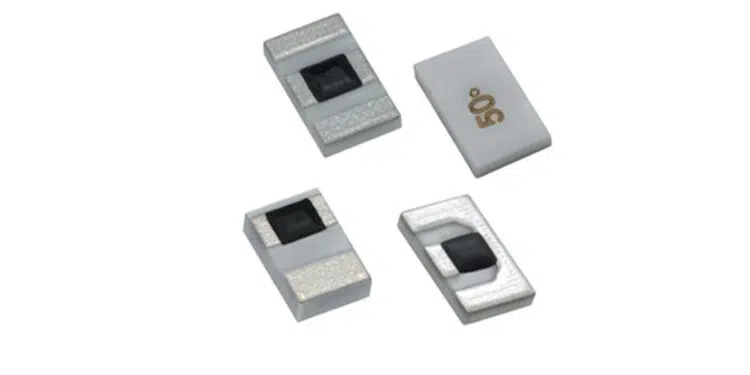Smiths Interconnect’s SMD resistors with outrigger heat sink increase power handling capabilities. The company announces addition of its CXH Surface Mount Outrigger Resistors and Terminations to its SpaceNXT HC Series of fixed and temperature variable attenuators.
The SpaceNXT HC series is specifically designed and tested to meet the space orbit environmental criteria. It is offered in a high-volume solution that leverages the Smiths Interconnect’s space heritage to improve reliability and performance over a QPL or COTS product.
The new SpaceNXT™ HC-CXH outrigger resistors and terminations are now available from a standard part list that eliminates the need for time-consuming drawings and specifications. They provide an easy-to-use and cost-effective solution with proven mission assurance and are supplied with all the necessary test and qualification data to ensure space flight compliance. The SpaceNXT™ HC-CXH outrigger resistors and terminations use a patented layout to offer improved power handling over conventional surface mount solutions without compromising broadband performance. This makes the HC-CXH products suited for a wide array of RF applications, particularly in the Space and Defence markets.
“Smiths Interconnect’s proven expertise in RF component design has resulted in a product series ideal for high reliability applications such as those in space orbit environments” says Tullio Panarello, VP and General Manager of the Fibre Optics and RF Components Business Unit at Smiths Interconnect. “ To aid RF designers achieve elite performance, we offer multiple configuration, power handling and material options, improving design flexibility and adaptability.”
The power increase from the patented design (US 8, 994, 490), with added solderable outrigger pads on the sides of the chip, allows to dissipate significantly more power through the extra thermal paths (approximately 4-12 times more than conventional flip chip solutions). The HC-CXH resistors and terminations are designed for surface mount (SMT) applications, manufactured using robust thick film process technology, are lead free and RoHS compliant.
The CXH Series is designed for surface mount (SMT) applications and offers:
- Flight units with 100% group A screening with optional Group B and C qualification
- Totally passive DC-27 GHz solution for broadband applications.
- Available lot qualification for higher reliability.
- Small footprint for space and weight savings
- Power handling performance tested based on MIL-PRF-55432 to ensure series qualification.
Applications
- Amplifier Circuits
- Transmit/Receive Modules
- Up/Down Converters
- Instrumentation
- Radar
- Broadcast































